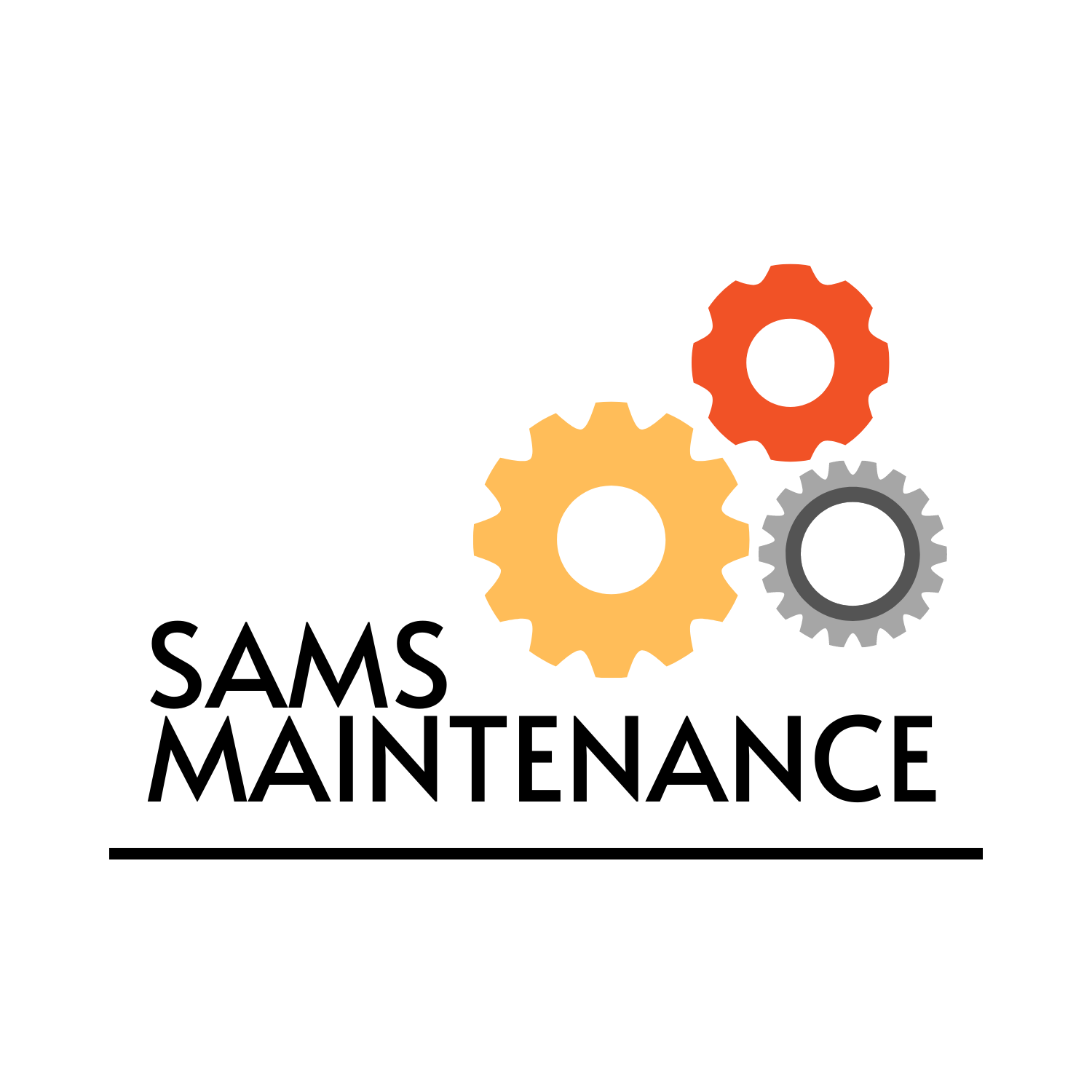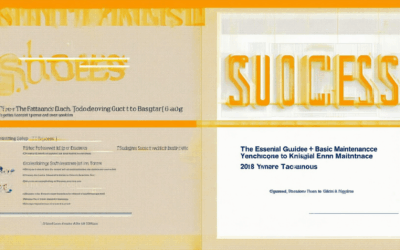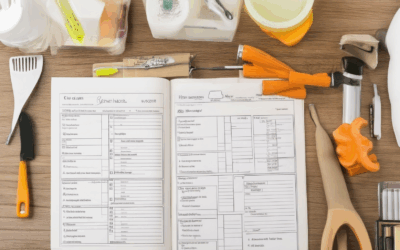Keeping your home in top shape is essential for both comfort and long-term savings. Routine repairs and maintenance are often overlooked until a problem arises, but taking a proactive approach can prevent costly issues and extend your home’s lifespan. Whether it’s fixing a leaky faucet, replacing worn-out tires, or inspecting gutters, regular upkeep is key to ensuring your living space remains safe and functional. In this article, we’ll explore everything you need to know about routine repairs for homeowners, including common examples, annual maintenance tasks, and the importance of creating a structured plan. By understanding the difference between routine maintenance and repairs, you can learn how to keep your home in prime condition year-round. From creating a maintenance checklist to understanding the components of a maintenance plan, this guide will provide you with actionable tips to stay ahead of potential problems. Stay tuned to discover how a consistent routine can save you time, money, and stress in the long run.
Key Takeaways
- Prioritize Home Maintenance: Implement a comprehensive checklist to ensure your home stays in top shape, reducing future repair costs.
- Schedule Regular Inspections: Conduct checks for roofs, gutters, siding, and more to catch issues early and prevent damage.
- Keep Systems Running Smoothly: Service HVAC, plumbing, and electrical systems annually to maintain functionality and energy efficiency.
- Protect Against Pests and Moisture: Regularly inspect attics, basements, and crawl spaces to prevent infestations and mold growth.
- Prevent Fire Hazards: Test smoke detectors, carbon monoxide detectors, and ensure fire extinguishers are ready.
- Stay Organized with Documentation: Maintain detailed logs of maintenance tasks and costs for easy reference and budgeting.
- Budget for Long-Term Savings: Set aside funds for routine maintenance to avoid costly repairs and extend your home’s lifespan.
- Hire Experts When Needed: Consult professionals for complex tasks to ensure quality and safety.
- Invest in a Home Service Plan: Subscribe for predictable, affordable maintenance covering essential systems and appliances.

What is an example of a routine repair?
Routine repairs are essential tasks needed to maintain the integrity and functionality of your home. Here are some common examples:
-
Gutter and Downpipe Cleaning and Repair
Gutters and downpipes often get clogged with debris like leaves and dirt. Cleaning them regularly prevents water overflow and damage to your roof or foundation. Repairs may include fixing leaks or loose connections.
-
Door and Window Adjustments
Over time, doors and windows may become stuck or difficult to open. Routine adjustments like lubricating hinges or re-fitting sashes can prevent costly replacements.
-
Plasterwork Repairs
Cracks or peeling paint in walls or ceilings can indicate underlying issues. Repairs may involve patching holes or applying fresh coats of paint to maintain a smooth finish.
-
Flooring Maintenance
Regularly inspecting and maintaining flooring, whether it’s tiles, wood, or carpet, helps prevent wear and tear. Fixes could include replacing loose tiles or deep cleaning carpets.
-
Appliance Checks
Ensuring appliances like refrigerators, ovens, and HVAC systems are functioning properly is crucial. This includes regular inspections and minor repairs to prevent major breakdowns.
Sams Maintenance offers comprehensive resources to help homeowners manage these routine repairs efficiently. From DIY guides to professional advice, we’re here to keep your home in top shape. Learn more about our maintenance services .
Competitors like Home Depot and Lowe’s also offer similar services, so it’s worth checking reviews and prices to find the best fit for your needs. Explore Home Depot’s offerings or visit Lowe’s online for more options.
What Yearly Home Maintenance Does Every House Need?
Every house requires regular maintenance to ensure its longevity, safety, and functionality. Here’s a detailed guide to the essential tasks:
Exterior Maintenance
- Roof Inspection: Check for missing shingles, cracks, or damage. Replace if necessary.
- Siding Check: Look for peeling paint, warping, or loose panels. Repair or replace as needed.
- Window and Door Frames: Inspect for rot, rust, or gaps. Tighten hinges and locks.
- Gutter Cleaning: Remove debris to prevent clogs and water damage.
- Deck and Walkway Safety: Check for loose boards, railings, or structural issues.
- Pressure Washing: Clean exterior surfaces to remove dirt and grime.
Interior Maintenance
- Flooring: Check for loose tiles or uneven spots. Address immediately to prevent tripping hazards.
- Wall Checks: Look for cracks, peeling paint, or signs of water damage. Repaint or repair as needed.
- Plumbing Systems: Inspect under sinks and around pipes for leaks. Fix any issues promptly.
- Appliance Maintenance: Clean vents, coils, and exhaust fans. Test appliances like the water heater and dryer vent.
- Smoke Detectors and Carbon Monoxide Levels: Test devices monthly and ensure they’re functioning properly.
Heating, Ventilation, and Air Conditioning (HVAC)
- HVAC Service: Schedule a professional inspection and cleaning to ensure efficiency and prevent breakdowns.
- Filter Changes: Replace or clean air filters regularly to maintain airflow and indoor air quality.
- Ductwork Check: Inspect for leaks, blockages, or rodents in the duct system.
Plumbing and Water Systems
- Water Heater Check: Ensure it’s functioning correctly and update the venting if necessary.
- Hot Water Tank Inspection: Look for leaks or sediment buildup.
- Garbage Disposal: Clean and lubricate the disposal unit to prevent clogs.
Electrical Systems
- Outlet and Switch Inspection: Check for flickering lights or buzzing outlets, which may indicate faulty wiring.
- Ground Fault Circuit Breaker: Test to ensure it trips correctly and resets safely.
- Lighting and Switches: Replace outdated bulbs and ensure switches are working properly.
Landscaping and Outdoor Features
- Lawn Care: Mow, edge, and fertilize the lawn to maintain health and appearance.
- Tree and Bush Pruning: Trim branches to prevent damage to your home or power lines.
- Sprinkler System Check: Ensure it’s functioning correctly and adjust settings as needed.
- Patio and Deck Maintenance: Clean and repair any loose or uneven stones or boards.
Additional Tips
- Professional Inspection: Consider hiring a professional inspector to catch issues you might miss.
- Use a Checklist: Create a personalized checklist to track progress and ensure nothing is missed.
- Stay Updated: Familiarize yourself with local building codes and maintenance guidelines.
By addressing these tasks annually, you’ll extend your home’s lifespan, protect your family’s safety, and maintain its value. Start early and take it one task at a time!
For more detailed guides and tools, visit our Lowe’s annual maintenance checklist .

Understanding Routine Maintenance vs. Repairs
Routine maintenance and repairs are two distinct approaches to preserving and restoring assets, but they serve different purposes and occur under different circumstances. Here’s a breakdown of the key differences:
Purpose and Timing
- Maintenance: Preventive in nature, aimed at preserving the condition and functionality of equipment or systems before issues arise.
- Repairs: Reactive, addressing issues that have already caused downtime or malfunction.
Scope of Work
- Maintenance: Involves regular checks, adjustments, and minor tasks to ensure everything runs efficiently. Examples include oil changes, filter replacements, and cleaning.
- Repairs: More involved, often requiring disassembly, diagnosis, and replacement or rebuilding of components. Examples include fixing a broken appliance or replacing a worn-out part.
Objective
- Maintenance: To prevent failures and extend the lifespan of assets, reducing the likelihood of unexpected downtime.
- Repairs: To restore functionality and bring equipment back to operational status after a failure.
Benefits
- Maintenance: Can save money by preventing major repairs and extending equipment life. It also ensures peak performance and safety.
- Repairs: Fixes immediate issues and restores usability, though it may involve higher costs and downtime.
When to Choose Each
- Perform maintenance regularly, as recommended by manufacturers or professionals, to stay ahead of potential problems.
- Seek repairs when equipment shows signs of wear, unusual noises, or decreased performance.
Combining Both
Effective asset management often involves a mix of routine maintenance and repairs. Regular maintenance can catch small issues before they escalate, reducing the need for costly repairs. However, repairs are essential when maintenance alone cannot solve the problem.
Further Reading
For expert advice on maintaining your home or property, visit our maintenance guide . Learn more about types of maintenance and how to schedule repairs effectively.

Creating a Maintenance Plan for Your House
A well-structured maintenance plan for your house ensures longevity and functionality. Here’s a comprehensive guide to help you get started:
Exterior Maintenance
- Roof Inspection: Check for leaks, missing shingles, or damaged flashing. Inspect twice a year, preferably in spring and fall.
- Siding Check: Look for cracks, peeling paint, or rot. Address issues promptly to prevent further damage.
- Gutter Cleaning: Remove debris and ensure proper drainage to prevent water damage. Clean at least twice a year.
Interior Systems
- HVAC Service: Schedule annual maintenance to ensure optimal performance and energy efficiency. Replace filters regularly.
- Plumbing Check: Look for leaks or corrosion. Test water pressure and inspect pipes for wear. Quarterly checks recommended.
- Electrical Systems: Test sockets, switches, and wiring. Ensure all circuits are functioning properly. Check quarterly.
Landscape Maintenance
- Tree and Shrub Trimming: Trim trees and shrubs to prevent damage to your house or power lines. Conduct this task seasonally.
- Lawn Care: Check for pests, diseases, or dead spots. Schedule treatments as needed and adjust the sprinkler system regularly.
House Interior
- Attic and Basement Checks: Inspect for pests, moisture, or structural issues. Address problems immediately to maintain safety and health.
- Crawl Space Inspections: Clean debris and check for signs of pests or moisture. Ensure vents and access doors are in good condition.
Kitchen and Bathroom Maintenance
- Leak Detection: Check under sinks and around tubs for water leaks. Fix minor issues before they escalate.
- Appliance Functionality: Test dishwashers, refrigerators, and garbage disposal units monthly to ensure proper operation.
Fire Safety
- Smoke Detector Testing: Replace batteries and test functionality monthly. Ensure all detectors are working properly.
- Carbon Monoxide Detector Checks: Test annually and replace detectors every 5-10 years as recommended.
- Fire Extinguisher Inspections: Check expiration dates and function tests. Ensure it’s accessible and everyone knows how to use it.
Documentation and Budgeting
- Keep Records: Maintain a log of all maintenance activities, including dates, tasks performed, and costs incurred.
- Budget Planning: Set aside funds for regular maintenance and unexpected repairs. Prioritize urgent fixes first.
Professional Consultation
- Expert Inspections: Consider hiring professionals for tasks like HVAC system inspections or plumbing issues that require advanced skills.
- Regular Servicing: Schedule annual services for critical systems to ensure everything runs smoothly.
By following this maintenance plan, you can extend the life of your home, save money on repairs, and enjoy a safer, more comfortable living environment. Regular checks and timely actions are key to maintaining your property’s integrity and functionality.
What is a Routine Maintenance Plan?
A routine maintenance plan is a structured approach to preserving the condition and functionality of your property through consistent, preventive measures. Regular maintenance ensures that systems remain operational, assets last longer, and potential issues are addressed before they escalate. Whether it’s a residential property, commercial space, or industrial facility, a well-executed routine maintenance plan is essential for long-term sustainability and cost efficiency.
Here’s a breakdown of key components:
- General Principles: Establish a schedule tailored to your property’s unique needs. Common intervals include monthly, quarterly, or annual checks depending on the type of property and its systems.
- Property-Specific Examples:
- Residential Properties: Check smoke detectors, test appliances, and inspect for leaks or pests. Rotate food in pantries and verify inventory levels.
- Commercial Spaces: Schedule HVAC filter changes, inspect electrical systems, and perform fire safety checks. Maintain plumbing and ensure security systems are functioning.
- Industrial Facilities: Conduct regular equipment inspections, monitor wear and tear on machinery, and check for signs of corrosion or damage.
- Tools You Need: A basic toolkit including multi-meter, flashlight, screwdrivers, and adjustable wrenches. Consider specialized tools for larger properties or specific systems.
- Frequency Guidelines: Refer to manufacturer manuals and local regulations for specific schedules. General guidelines may include weekly cleaning, bi-monthly inspections, and quarterly deep cleans.
- Best Practices: Keep records of maintenance activities, including dates and findings. Use checklists to ensure nothing is missed during inspections.
Routine maintenance also extends to seasonal preparation. For example, preparing HVAC systems for winter or cooling systems for summer can prevent costly repairs and ensure energy efficiency. Always consult professionals if tasks require advanced expertise or specialized knowledge.
By implementing a routine maintenance plan, you not only extend the lifespan of your property but also enhance safety, comfort, and reliability. Whether you handle it yourself or hire a professional, consistency is key to maintaining peak performance and preventing unexpected issues.

What is a Home Service Repair Plan?
A Home Service Repair Plan is an annual subscription that provides convenient access to routine maintenance and repair services for your home’s essential systems and appliances. These plans are designed to protect you from unexpected breakdowns caused by normal wear and tear, ensuring your home operates smoothly year-round.
What’s Typically Covered in a Home Service Repair Plan?
- Labor Costs: Coverage for qualified technicians to perform repairs and maintenance.
- Parts: Replacement of eligible parts during service visits.
- Regular Check-Ups: Preventative maintenance for systems like HVAC, plumbing, and appliances.
- 24/7 Support: Access to assistance anytime day or night for emergencies.
Why Are These Plans Growing in Popularity?
Home service repair plans are becoming increasingly popular because they offer several advantages over traditional repair methods:
- Predictable Budgeting: Fixed monthly or annual fees allow you to budget effectively.
- Convenience: No need to worry about finding reliable contractors or paying high out-of-pocket costs.
- Peace of Mind: Knowing your home is protected by trained professionals.
How Does a Home Service Repair Plan Work?
When you enroll in a home service repair plan, you’ll receive:
- A welcome kit with information about your plan.
- A dedicated account manager for personalized support.
- Access to an online portal for scheduling and tracking services.
Comparison: Home Service Repair Plan vs. Traditional Repairs
| Traditional Repairs | Home Service Repair Plan |
|---|---|
| Unclear costs | Fixed, predictable pricing |
| Time-consuming process | Quick access to trusted professionals |
| Potentially high out-of-pocket expenses | No surprise charges |
Why Should You Consider a Home Service Repair Plan?
- Protect your home systems from unexpected failures.
- Enjoy peace of mind with 24/7 support.
- Save money on costly repairs and replacements.
- Gain access to priority service and exclusive discounts.
Conclusion
A home service repair plan is a smart investment for anyone who values convenience, reliability, and financial security. By subscribing to a plan, you gain access to a network of skilled professionals ready to handle your home maintenance needs. Visit our website to learn more about how we can assist you in protecting your home and ensuring smooth operations all year round.




0 Comments